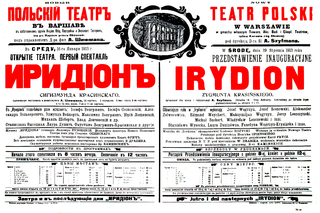 W
WRomanticism was an artistic, literary, musical, and intellectual movement that originated in Europe towards the end of the 18th century, and in most areas was at its peak in the approximate period from 1800 to 1850. Romanticism was characterized by its emphasis on emotion and individualism as well as glorification of all the past and nature, preferring the medieval rather than the classical. It was partly a reaction to the Industrial Revolution, the aristocratic social and political norms of the Age of Enlightenment, and the scientific rationalization of nature—all components of modernity. It was embodied most strongly in the visual arts, music, and literature, but had a major impact on historiography, education, chess, social sciences, and the natural sciences. It had a significant and complex effect on politics, with romantic thinkers influencing liberalism, radicalism, conservatism, and nationalism.
 W
WAn Ancient Burial Mound by Raklev on Refsnæsis a Danish landscape painting by Johan Thomas Lundbye from 1839. The painting is executed in the national romantic tradition, as advocated by Niels Laurits Høyen.
 W
WIvan Mazepa (1639–1709) was a significant figure in the history of Ukraine. One story about him says that as a young man, he was caught in flagrante with a noblewoman, whose husband punished him by tying him naked to a wild horse and setting them free; eventually he reached the Cossacks and became their military leader. This legend caught the attention of the English poet Lord Byron, whose Mazeppa (1819) brought the events to wider attention. His narrative poem inspired many paintings, particularly by French Romantics, which in turn stimulated musical compositions, stage plays, more poems, and so on. New life was breathed into the equestrian tale when it was transposed to the American Wild West. With the independence of Ukraine in 1991, the figure of Mazepa is once again on the international stage.
 W
WThe history of painting reaches back in time to artifacts from pre-historic humans, and spans all cultures. It represents a continuous, though periodically disrupted, tradition from Antiquity. Across cultures, and spanning continents and millennia, the history of painting is an ongoing river of creativity, that continues into the 21st century. Until the early 20th century it relied primarily on representational, religious and classical motifs, after which time more purely abstract and conceptual approaches gained favor.
 W
WIrydion is a drama written by Polish poet Zygmunt Krasiński. He begun work on it in 1832 and published it in 1836. It debuted on stage in 1913 at Teatr Polski in Warsaw.
 W
WMignon desires her fatherland is an 1836 painting by the Dutch-French artist Ary Scheffer. The picture depicts a young woman Mignon, inspired from a character in Goethe's 1795-96 novel Wilhelm Meister's Apprenticeship. The 1866 Ambroise Thomas opera Mignon was based on the same character, and Scheffer's feminine representation of Mignon in a dress influenced her portrayal by Thomas. The painting currently hangs in the Dordrechts Museum in Dordrecht, Netherlands.
 W
WUgolino and His Sons is a marble sculpture of Ugolino made by Jean-Baptiste Carpeaux in Paris during the 1860s. It depicts the story of Ugolino from Dante's Inferno in which the 13th century count is imprisoned and starving with his children. The work, known for its expressive detail, launched Carpeaux's career.
 W
WThe Undivine Comedy or The Un-divine Comedy, is a play written by Polish Romantic poet Zygmunt Krasiński in 1833, published anonymously in 1835. Its main theme is sociopolitical conflict – in Krasiński's words, "[between] aristocracy and democracy". It is Krasiński's best-known work and is regarded as one of the most important works of Polish Romantic literature.
 W
WWinter at the Sognefjord is a painting by the Norwegian artist Johan Christian Dahl from 1827.